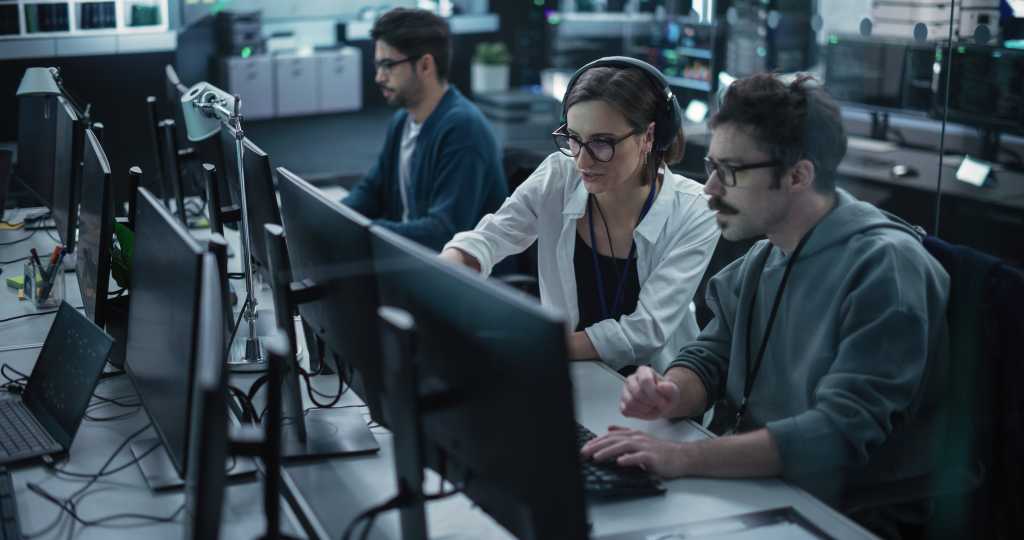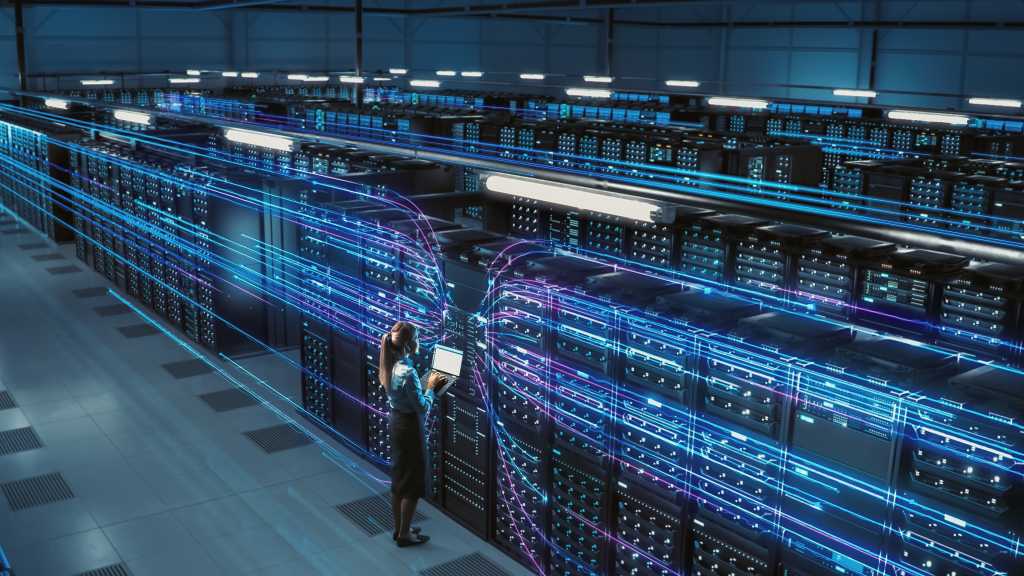Join the event trusted by enterprise leaders for nearly two decades. VB Transform brings together the people building real enterprise AI strategy. Learn more
This year’s VB Innovation Showcase finalists will be at VB Transform, June 24-25, in San Francisco. They will take to the stage as we delve into what’s actually working in enterprise AI, from copilots to agents.
Seven companies have been selected to showcase their generative AI products or features that are most likely to disrupt the enterprise.
Those selected to present will do so in front of an invite-only audience of 600 industry decision-makers, and receive direct feedback from a panel of VC judges.
The 2025 Innovation Showcase finalists are:
CTGT
Founded in 2024 by a team of Stanford and University of California, San Diego researchers, San Francisco-based CTGT is an AI risk management platform designed to change how enterprises deploy generative AI. Unlike conventional AI pipelines that require periodic offline updates, CTGT’s platform enables continuous real-time monitoring and automated refining of models in production, allowing AI systems to learn and adapt within live environments without ever going offline. This means models improve on the fly, closing the gap between development and deployment and ensuring maximum uptime and reliability for mission-critical AI applications.
The company raised a seed $7.2 million round in February.
Catio
Palo Alto-based Catio is an AI-powered platform designed to assist companies in optimizing their tech stack architecture. The platform is a copilot for technical leaders and teams, providing data-driven insights and recommendations to evaluate, plan and evolve their technology infrastructure. Catio tackles these challenges by providing continuous architecture design, strategic tech stack planning, accurate analytics and evaluation of architectures, and personalized recommendations for each enterprise’s unique needs, all powered by advanced AI models and proprietary data.
In March, Catio announced $3 million in additional funding. This is in addition to the $4 million raised between 2023-2024.
Kumo
Mountain View-based Kumo AI is focused on democratizing AI, particularly in the realm of predictive analytics, by leveraging cutting-edge Graph Neural Networks (GNNs) and Relational Deep Learning (RDL). They aim to make it easier for businesses to build and deploy highly accurate machine learning models directly from their relational data.
Kumo has raised $37 million in funding in two rounds. Their latest round was a $18 million Series B in September 2022.
Solo.io
Cambridge, Mass.-based Solo.io is a cloud-native application networking company that provides solutions for connecting, securing and observing modern applications, particularly those built on Kubernetes and microservices. Founded in 2017, Solo.io aims to simplify the complexities of application networking in dynamic, multi-cloud environments.
A $135 million series C funding round in 2021 brought the company’s total funding to $175 million. The company is valued at $1 billion.
Superduper.io
Tel Aviv-based Superduper.io is an AI company focused on simplifying the integration of AI models and workflows directly within existing databases, eliminating the need for complex data pipelines and separate AI infrastructure. Their core offering is a Python-based open-source framework that allows businesses to build and deploy custom AI applications and agents directly on their data, wherever it resides.
Superduper.io has raised $1.75 million across two seed funding rounds. Notable investors include Hetz Ventures, session.vc and MongoDB. It was also part of the Intel Ignite accelerator program.
Sutro
Oakland-based Sutro is an AI-powered no-code platform that allows users to create full, production-ready mobile and web applications simply by describing their idea in plain text. It aims to democratize software development, making it accessible to individuals and businesses without coding expertise.
Sutro was founded in 2021 and has raised around $6 million across two early funding rounds in 2023-2024.
Qdrant
Berlin-based Qdrant is a high-performance, massive-scale Vector Database and Vector Search Engine designed for the next generation of AI applications. It’s built in Rust, a language known for its safety and performance, making it a reliable choice for demanding AI workloads.
Founded in 2020, Qdrant has raised $37.8 million over three rounds of funding, the latest of which was a $28 million series A in January 2024.
Meet our Judging Panel
Emily Zhao, principal at Salesforce Ventures
Zhao is a principal at Salesforce Ventures focused on AI/ML. She also spends time on developer tooling, cybersecurity, vertical SaaS, and health tech. She joined Salesforce Ventures in the spring of 2022 and recently helped launch its $500 million generative AI fund. She has led several investments in the fund, including Hugging Face, RunwayML, Anthropic, Cohere and others.
Before joining Salesforce Ventures, Zhao was an investor at Avenir Growth Capital, a venture-growth fund based in New York, where she spent most of her time on vertical SaaS, health tech and application software. Before Avenir, Emily was an associate in the Private Equity group at Blackstone and invested in corporate buyout transactions.
Matt Kraning, partner at Menlo Ventures
Kraning is one of Menlo‘s newest partners. He is focused on investing in AI, enterprise SaaS, national defense and cybersecurity.
He’s a deeply technical former founder and a proven company builder with a Ph.D. in electrical engineering, specializing in AI and large-scale computing. Before Menlo, Kraning was the co-founder and CTO of Expanse, where he helped define the AI-driven attack surface management category. He’s also advised and invested in over 50 startups, including unicorns like Peregrine and Astranis, and recently led a $12 million round for Wispr Flow.
Rebecca Li, investment director at Amex Ventures
Li is an Investment Director at Amex Ventures. She joined in 2024 to focus on enterprise software investing, leading early-stage investments in infrastructure software, developer tools, data and AI.
Before joining American Express, Li led fintech and software venture investments at Global Asset Capital. Her prior experience includes business development and partnerships at Credit Karma and technology private equity investing at GIC.
Come see at VB Transform
All of the pitches will occur on June 25 from 4:45 to 5:30 p.m. PT. on the main stage for our in-person attendees.
Presenters will have three minutes for their pitch, followed by two minutes of feedback from the judging panel. Awards will be presented in three categories: 1) most likely to succeed, 2) coolest technology and 3) best presentation style.
Read about the winners from VB Transform 2024: SambaNova, Instabase and Tabnine.
Daily insights on business use cases with VB Daily
If you want to impress your boss, VB Daily has you covered. We give you the inside scoop on what companies are doing with generative AI, from regulatory shifts to practical deployments, so you can share insights for maximum ROI.
Read our Privacy Policy
Thanks for subscribing. Check out more VB newsletters here.
An error occured.



















